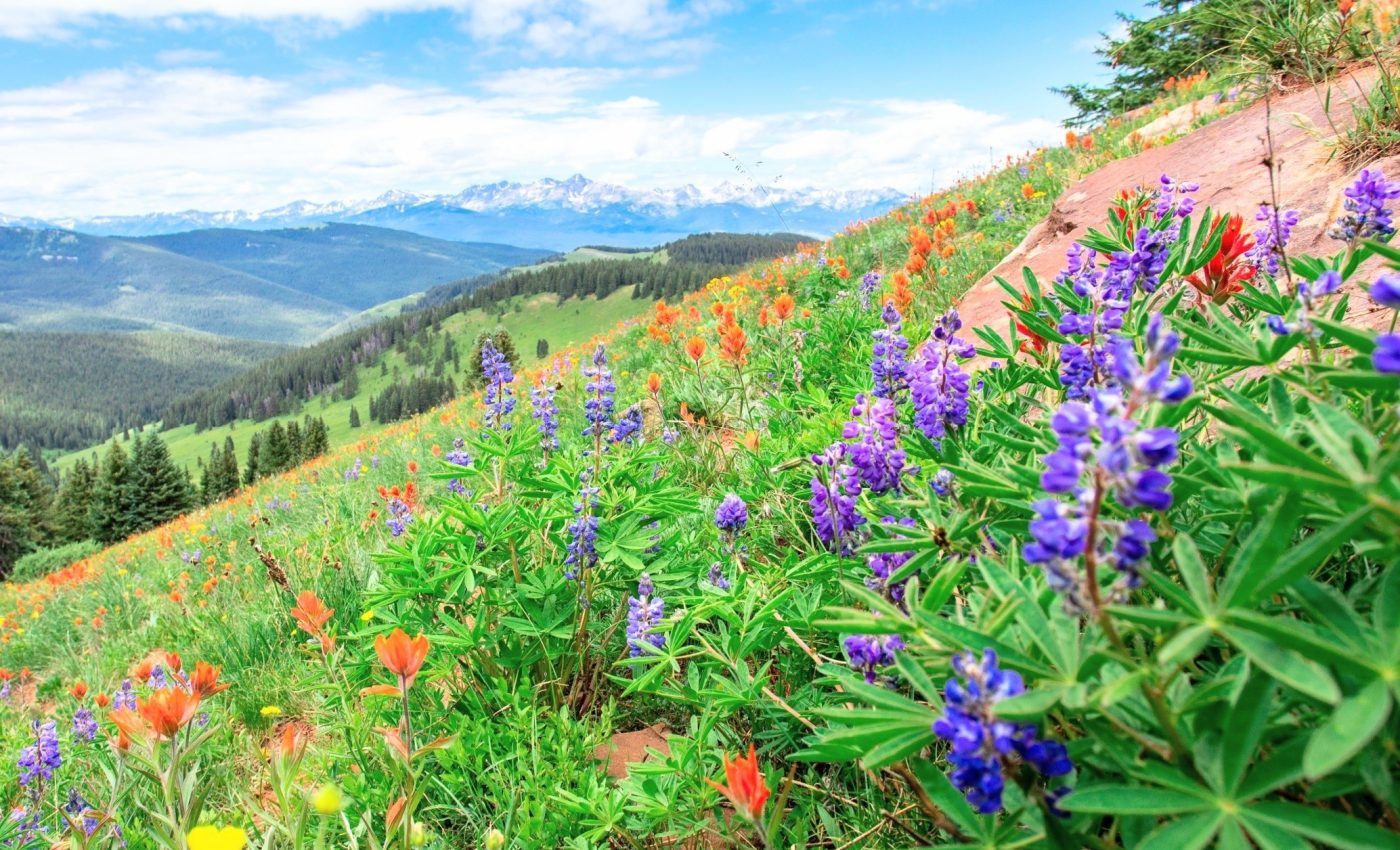
Warming climate is pushing alpine flowers to bloom early
Flowers on Colorado’s Pikes Peak are blooming about 17 days earlier than they did a century ago. The pollinators that depend on them are shifting too, though not always in sync.
A new study from the University of Colorado Boulder (UCB) draws on over 100 years of records to reveal how climate change is reshaping one of North America’s most famous alpine ecosystems.
Researchers tracked flower and insect interactions on the 14,115-foot summit, comparing modern observations with data first collected in 1910.
Their results show both plants and pollinators responding to warmer conditions and earlier snowmelt – but plants, on average, are moving faster.
Scientists call seasonal timing phenology: the schedule of life cycle events like leaf out, flowering, and insect flight. When spring heat and snowmelt shift, those schedules shift too.
“In our study system plants have advanced more rapidly than pollinators,” said Leana Zoller, the paper’s first author at UCB. “That pattern sets the stage for mismatches if the difference grows.”
A century on the summit
The team revisited the exact alpine slopes used by Frederic Clements and Frances Long. That protected area let them track climate’s imprint on flowers without heavy land-use noise.
Colorado’s high country has warmed since the early 1900s, a shift visible in state temperature records. Warmer winters move spring cues earlier for both plants and insects.
Across the West, April 1 snowpack has declined by roughly 15 to 30 percent since mid-century, an analysis of long-term observations shows. Less snow changes soil moisture and the early season water that alpine species rely on.
Earlier snowmelt can lengthen the growing season at high elevations. It can also expose buds to late frosts, a hazard that timing used to avoid.
Climate shifts affect flowers
The study measured more than timing for single species. It asked whether plant insect pairs kept meeting during their active windows.
The researchers tallied 149 pairs, linking 25 wild pollinators to 11 flower species. Nearly 80 percent now have more temporal overlap, the shared window when both partners are active, than they did a century ago.
That may help certain insects catch more nectar and pollen in the short term. Yet the margin is thin if plants keep moving faster than the insects that visit them.
Pollinators advanced by about 11 days, on average, compared with the historical baseline. Plants advanced by even more days, which raises the risk that future springs could flip the advantage.
Signals from bees and wasps
Not every species is moving in the same direction. A pollen wasp, Pseudomasaris vespoides, is appearing earlier now than it did in the archival records.
The western bumblebee tells a different story. The study reports this bee emerging 12 days later than it did a century ago.
That timing could compound other pressures on the species. Across its range, the bee’s occurrence has fallen by about 57 percent since 1998, according to new research that links declines to warming, drought, and pesticides.
When a bee wakes after peak bloom, nectar and pollen are scarce. When a flower opens before typical visitors fly, fewer pollen grains move between plants.
Flowers and climate affect food
Alpine slopes feel far from farms, yet the same biology underpins both. Animal pollination supports about 75 percent of global food crops and nearly 90 percent of wild flowering plants, a landmark report concluded.
Shifts that look small on a calendar can have outsized effects in these networks. A missed week can mean fewer seeds and less food for the season. The team’s results matter for conservation choices. They show how a warming climate nudges interactions, not just species.
Maintaining diverse communities can buffer timing shocks. Different flowers and insects, active at slightly different moments, spread risk across the season.
Keeping watch on the slopes
The study links interaction persistence to overlap length. More overlap today correlates with a higher chance that a plant-insect partnership still exists after a century.
That is a clue for management in protected areas. It suggests watching overlap, not just first bloom or first flight. Tracking snowpack will remain vital as winters change. So will monitoring late cold snaps that can erase early gains.
Future work can test how flexible these species are. Some insects can switch to different flowers, while others specialize tightly.
Then and now on Pikes Peak
Researchers revisited the original study plots between 2019 and 2022. They watched for insects visiting flowers, then matched those visits to historical notes.
They compiled the timing of flowering and insect flight for species that appeared in both eras. That allowed a clean, apples-to-apples comparison across a full century.
The records cover early spring through late summer across alpine and subalpine zones. Those zones hold short growing seasons, so even small shifts matter.
The Pikes Peak setting is useful because it is relatively undisturbed. That reduces confounding effects, strengthening the climate signal in the data.
A warning written in flowers
A single mountain ledger became a powerful test of an old idea. Climate can stretch or compress biological schedules, and species do not respond equally.
Even with many pairs overlapping more today, the direction of change matters. If plants keep pulling ahead, a short period of advantage for pollinators could reverse.
Managers can build resilience by protecting habitat complexity. That includes flower rich meadows at different elevations and aspects, which offer varied timing windows.
Simple steps help, even far from alpine tundra. Reducing pesticide risk and planting diverse, native flowers across spring and summer supports wild pollinators and protects climate balance in towns and fields.
The study is published in the journal The American Naturalist.
—–
Like what you read? Subscribe to our newsletter for engaging articles, exclusive content, and the latest updates.
Check us out on EarthSnap, a free app brought to you by Eric Ralls and Earth.com.
—–













